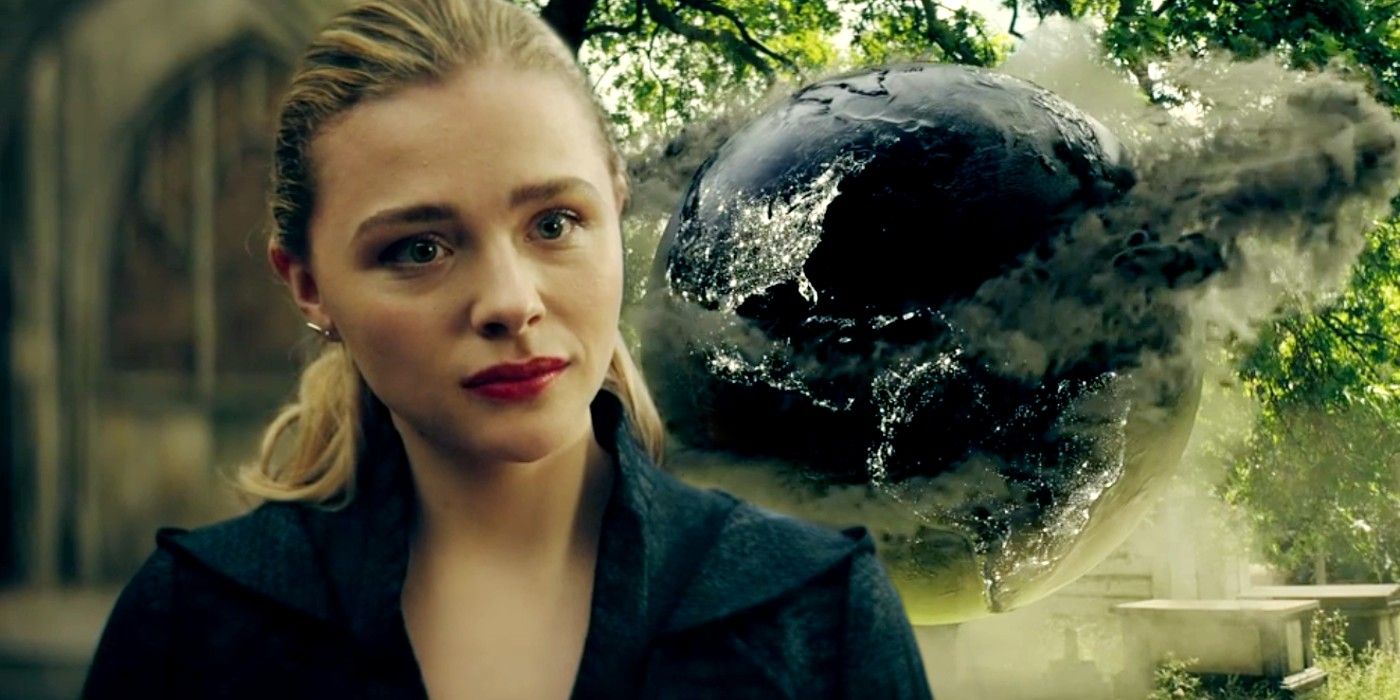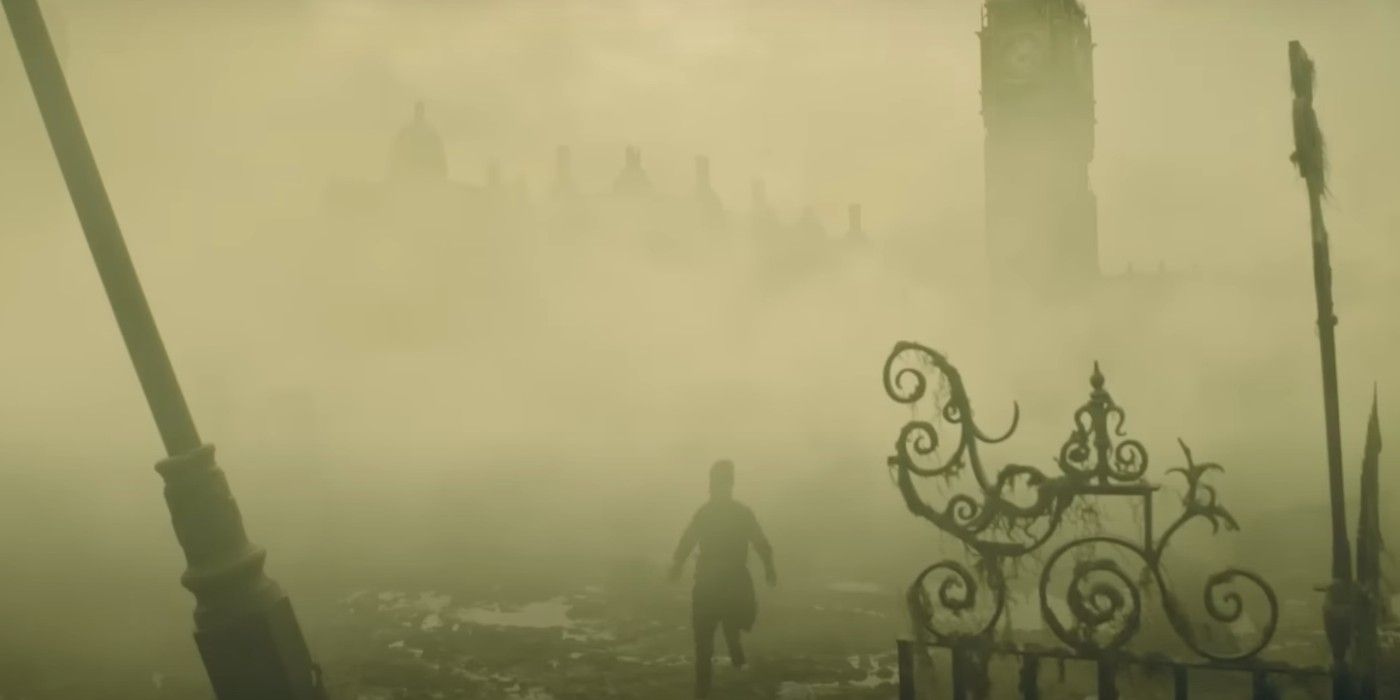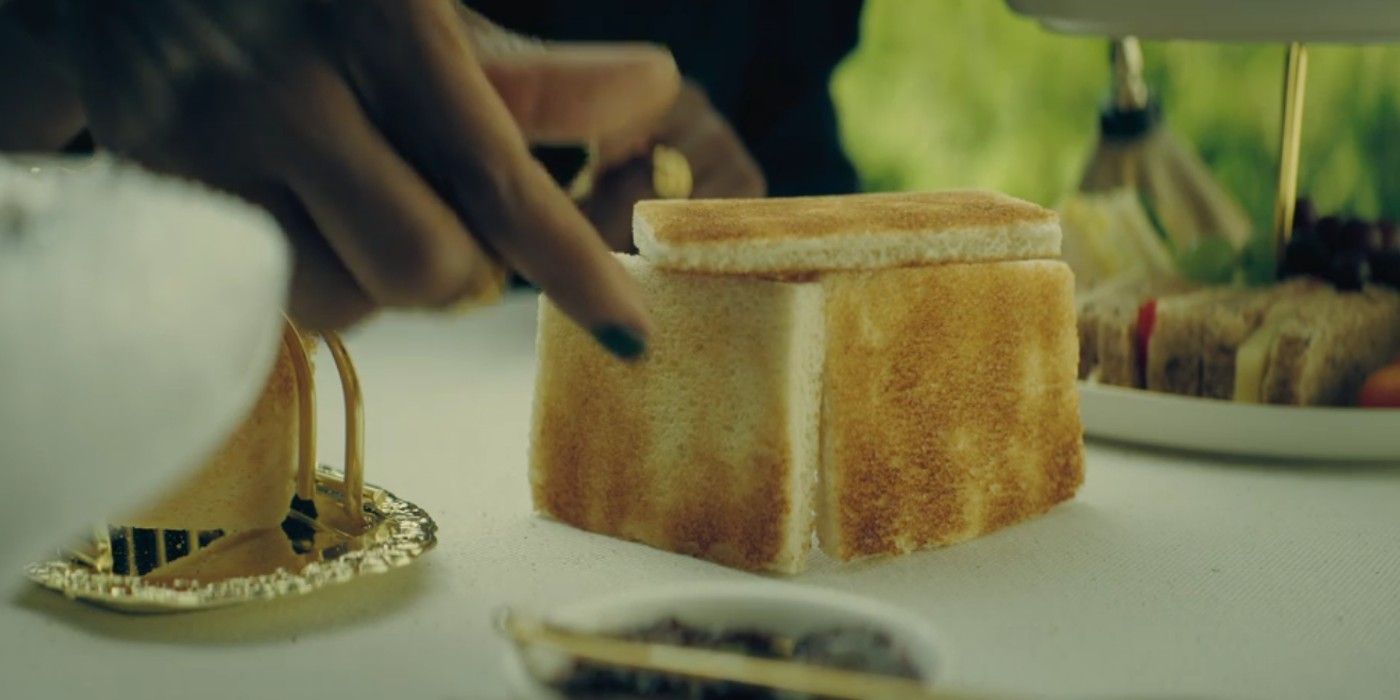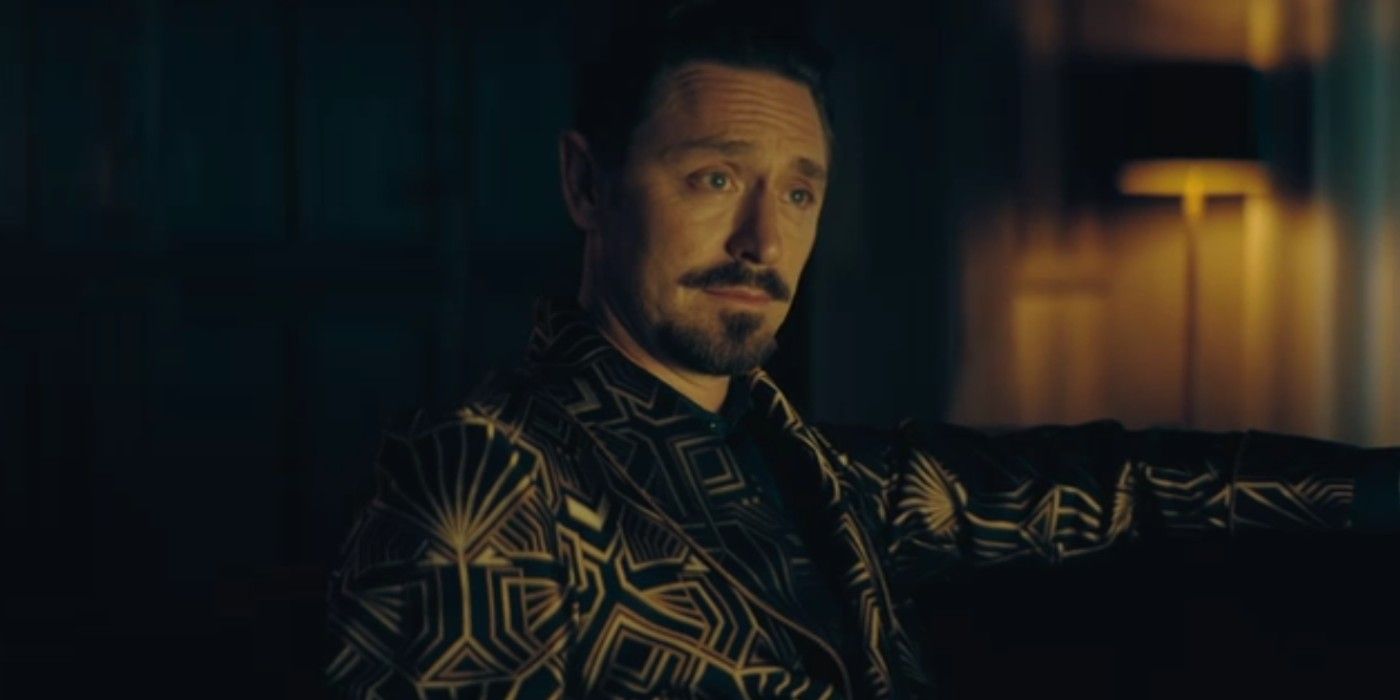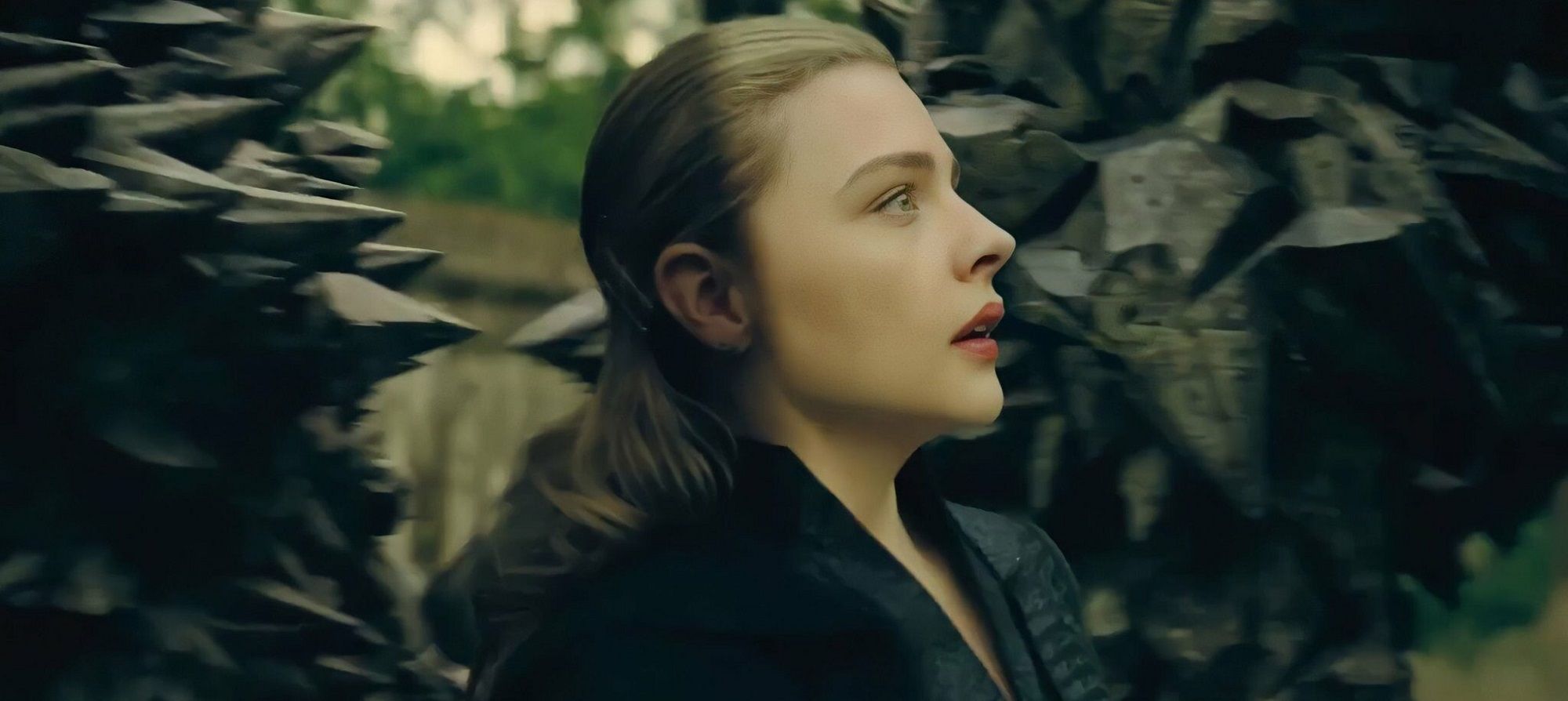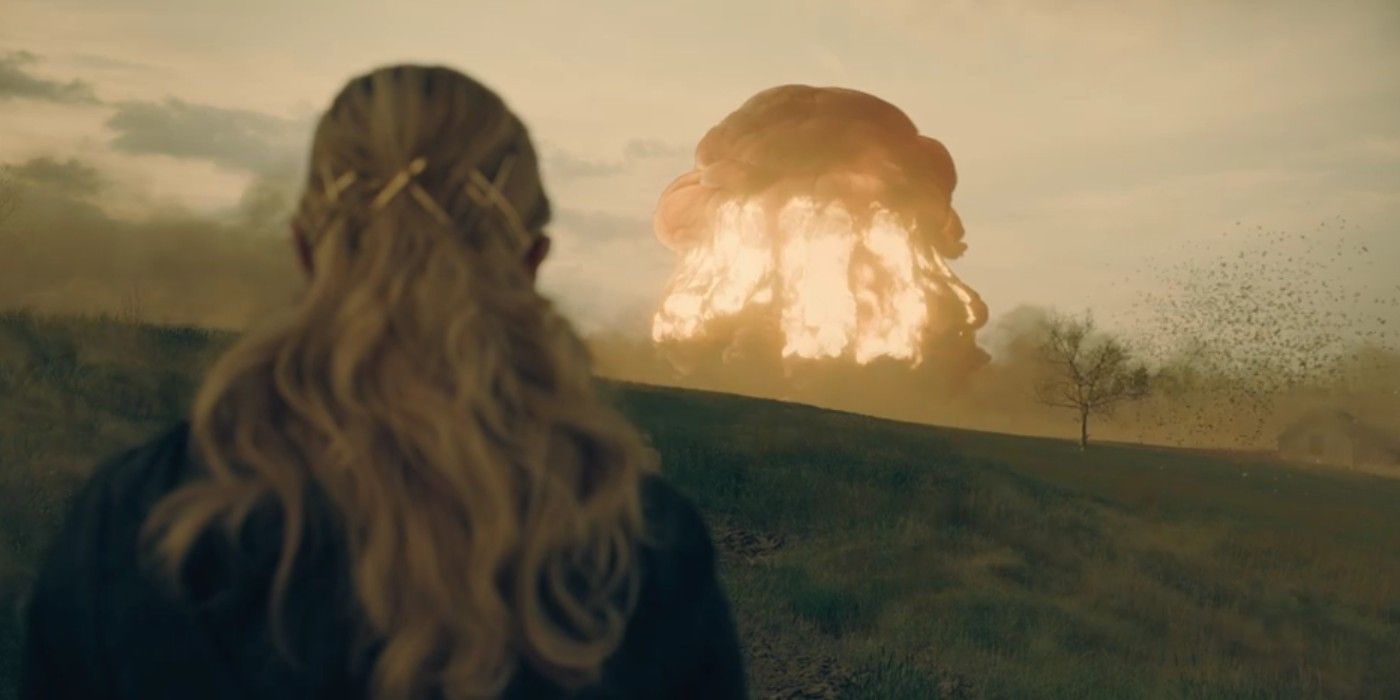The Peripheral is packed with mysteries, but episode 4 goes a long way toward solving the very biggest ones. Based on a novel by William Gibson and adapted by the showrunners of Westworld, few would have entered Amazon Prime Video TV series The Peripheral expecting a straightforward ride. Mercifully, audiences won't be forced to wait until the season finale for a massive catch-all exposition dump, as The Peripheral episode 4 includes a massive exposition dump of its own. As Flynne Fisher's curiosity becomes impossible to ignore, her cohorts in the future are forced to fill the gaps in her knowledge, thereby plugging gaps in the viewer's knowledge also.
Many of The Peripheral episode 4's solved mysteries concern what happened before, during, and immediately after the "Jackpot" - a post-apocalyptic event that occurred between Flynne's 2032 era and Wilf Netherton's 2100. While some of these reveals have been foreshadowed in previous episodes, others come as a complete surprise. The Peripheral also makes canny use of visual aids in order to let itself be understood, employing everything from graves to slices of toast in an attempt to make convoluted concepts somewhat digestible. These are all the big reveals from The Peripheral episode 4.
What The Peripheral's Apocalypse Actually Looked Like
Between The Peripheral's mostly-recognizable 2032 era and the pristine futurism of 2100 London, viewers may struggle to imagine that an apocalyptic event happened at all. The Peripheral episode 4 begins with a flashback to Aelita and Wilf's childhood, set approximately 25 years before Flynne's arrival. A thick layer of smog highlights pollution's role in the Jackpot, and the London street urchins conjure an almost Dickensian dystopia where orphans forage for food and sleep in abandoned vehicles.
Perhaps the most fascinating detail in The Peripheral episode 4's opening sequence is the nearby architecture, as famous landmarks all appear either half-destroyed or half-built, depending on your perspective. These constructs looked just fine in The Peripheral's future timeline, confirming London has been remade in its former image by "assembler" nanotech. This glimpse of young Aelita West and Wilf Netherton's childhood serves as proof that The Peripheral's world was utterly destroyed by the Jackpot. As healthy as London may look to Flynne, the severity of the Jackpot's destruction necessitated a complete rebuild.
The Three Pillars Of The Peripheral's Future
Stacking toast is certainly a novel way of explaining dystopian politics, but T'Nia Miller's Cherise makes that doughy house work for her nonetheless, finally explaining the power landscape of future London that has, until now, remained unclear. The Klept oligarchy is essentially an organized mafia comprising various different families, including that of Lev Zubov. After the Jackpot hit, the Klept's unity and power allowed them to restore some semblance of order through violence. As thanks for their service, the Klept now live almost as royalty in The Peripheral's future timeline.
Although the Klept possesses great power, the oligarchy is kept in check by the Met Police - a play on London's genuine Metropolitan Police Service. Thus far, The Peripheral has only revealed the Met's robotic constables, with a cyber-cop questioning Flynne and Wilf in episode 3. The final pillar, of course, is Cherise's own Research Institute. Whereas the Klept provided the power and the Met gave control, the R.I. offered technology to The Peripheral's post-apocalyptic rebuild. Through assemblers, medicine, food, and much more besides, the R.I. is why London changes from a wasteland into a wonderland across the space of just 25 years.
What The Peripheral's Stub Timelines Are Being Used For
In The Peripheral's temporal mythology, a new timeline known as a "stub" is created whenever the future influences the past, and while Flynne Fisher has previously questioned Lev Zubov's interest in her stub specifically, she never quite received a straight answer. Zubov's motivations remain murky, but during a conversation with Wilf in The Peripheral episode 4, the villain finally explains the kind of horrible business stubs are being used for. Highlighting his brother as an example, the villainous Lev Zubov explains how a member of the Klept with a pharmaceutical business could open up a new stub and begin testing a new drug on its population.
The inhabitants of these guinea pig stubs are effectively simulations for criminals in the future. Acts of mass murder are callously viewed as little more than data-gathering exercises, and the victims barely even register as genuine sentient people. Although Zubov is describing the Klept's stub usage here, it seems highly likely that the Research Institute would be indulging in the same dark practices.
What The Peripheral's Jackpot Was
As Ash explains to Flynne, the Jackpot was a culmination of humanity's errors over decades: pollution, disease, famine, cyber-warfare, the first design for Sonic the Hedgehog in the 2020 movie, etc. By Flynne's 2032 timeline, the process of the Jackpot is already firmly in motion, and becomes unstoppable by 2039. The arrival of the Blood Plague in 2041 only darkened Earth's plight further, and the devastation would last approximately 40 years, claiming over 7 billion lives. The real ace up the Jackpot's sleeve was a terrorist attack on a U.S. nuclear silo, covering a large chunk of North America in fallout, and possibly explaining why The Peripheral's future timeline has made little mention of the United States.
The Jackpot - a term coined in a morbidly humorous attempt to describe the chain of events that built toward The Peripheral's apocalypse - lasted roughly between 2040 and 2080, and in episode 4's opening flashback to 2075, signs of recovering are beginning to poke through. Aelita and Wilf mention getting "scooped," confirming efforts are underway to sweep up stray children and place them into the care of rich families, thus maintaining the outward facade of perfect society. The Peripheral season 1 episode 4's flashback also shows a half-constructed Research Institute air cleaner among London's fumy skyline, explaining when the pollution problem was tackled. Another helpful clue comes from Lev Zubov, who mentions Aelita and Wilf being fitted with an "immunity booster," explaining how the pandemic and disease was quelled.
Why Flynne's Timeline Is So Important In The Peripheral
One overriding question since The Peripheral began has been why Flynne and her timeline were specifically chosen. Although more layers to that mystery may reveal themselves yet, Ash and Wilf's graveyard exposition dump in The Peripheral episode 4 goes a long way toward answering. The nuclear silo at the heart of the Jackpot is located near the Fishers' hometown. If Aelita is trying to influence Flynne's stub to somehow avoid the Jackpot, it makes sense that she would choose operatives from the local area - especially operatives who are handy in a sim and have military experience.
The Jackpot becomes inevitable in The Peripheral's 2039, giving Flynne and her allies seven years to alter their future. Using knowledge and technology from 2100, the group may be able to lessen the impending pollution and disease problems, and head-off the deadly blood virus. If they can also prevent the devastating grid hacks and nuclear terrorist incident, Flynne Fisher's The Peripheral stub may find itself fortunate enough to cash out before hitting the Jackpot.
The Peripheral continues Friday on Prime Video.

